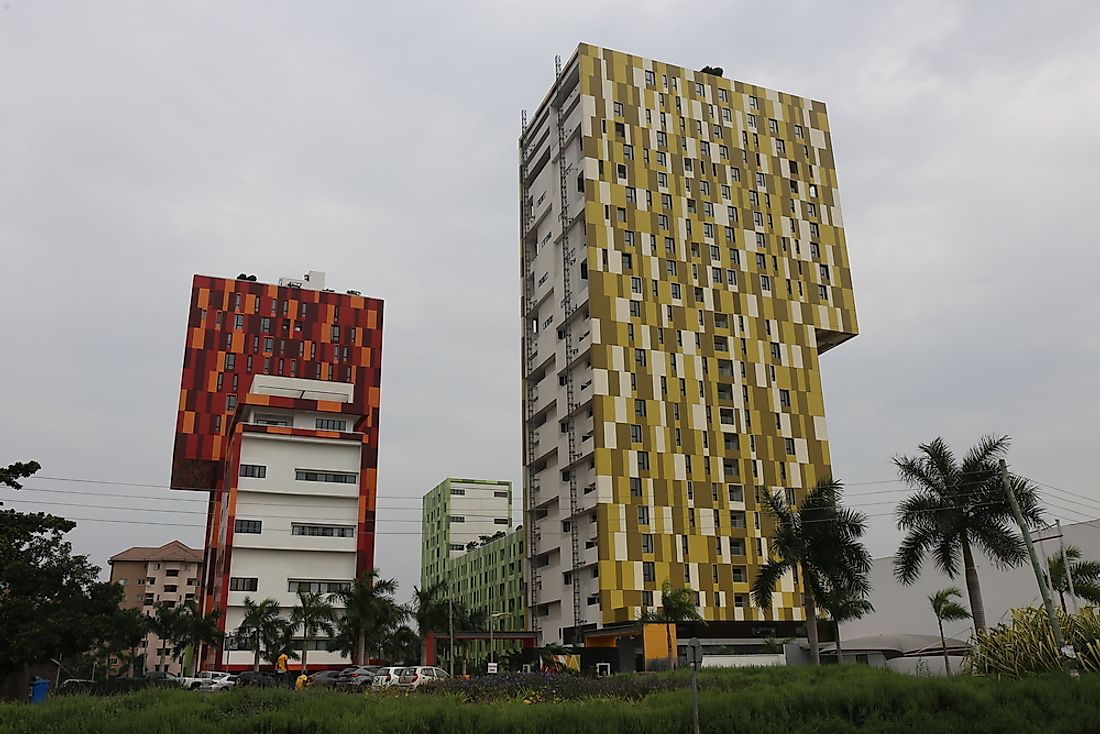What Are The Biggest Industries In Ghana?

Ghana is an independent state that is situated in West Africa. Ghana is surrounded by Gulf of Guinea, Togo, Burkina Faso, the Atlantic Ocean, and the Ivory Coast. Ghana occupies an area of about 92,099 sq miles with a population of over 28,308,301 people. The first permanent kingdom in present-day Ghana dates back to the eleventh century. Various empires and kingdoms have emerged in Ghana over the centuries with the most powerful one being the Ashanti Kingdom. Several European nations including the Portuguese contested for trading rights in the region from the fifteenth century. The United Kingdom managed to establish ultimate control over the region during the late nineteenth century. After a century of resistance from the natives, the country’s boundaries were established during the 1900s. The Ghanaians gained their independence in 1957. The country’s democratic political system and economic prosperity have contributed to it becoming a regional power in the region.
The largest industries in Ghana
Mining
The Ghanaian Mining industry contributes over 5% of the state’s GDP with the minerals accounting for more than 37% of their exported products. Ghana has the biggest gold reserves in the continent. Gold accounts more than 90% of the country’s mineral exports. There are over 23 large-scale mining firms in Ghana, producing manganese, bauxite, diamonds, and gold. There are also 90 mine support service firms and three hundred registered small-scale mining groups operating in Ghana. Over 21% of gold mined in Ghana during the 1990s came from numerous underground mines in Ashanti and western regions. Gold production surpassed 1 million fine ounces in 1992 from 327,000 fine ounces in 1987. Out of the 1.6 metric tons of Manganese mined in 2006, 584,000 tons were shipped to China, 184,00 tons to Norway, and 832,000 tons to Ukraine. Artisan miners recovered diamond from alluvial and in-situ deposits in Birim Valley.
Energy
Ghana generates electricity from renewable energy sources, fossil-fuel, and hydropower. The country generated about 49.1% of its power in 2012 from renewable energy. The Ghana-Grid-Company deals with electricity transmission in Ghana. Ghana started building solar plants all over its vast sun-rich terrain in 2016 with the main aim of becoming the first state to get 6% of its electricity from solar-energy generation. The 155 megawats Nzema project is the largest solar energy plant on the planet, which increased electricity generation in Ghana by 6%. The country has class four to six wind resources and high-wind places like Gambaga and Kwahu Mountains, the Accra Plains, and Nkwanta. The maximum electricity that could be generated from the country’s available wind resources is estimated to be over 500 GWh per year. The biggest Akosombo hydroelectric dam generated over 6,495 GWh of electricity in 2011.
Tourism
The tourism industry is one of the main economic sectors in Ghana, which accounted for 4.9% of the country’s GDP in 2009, attracting over 500,000 tourists. Forbes listed Ghana as the eleventh friendliest nation on the planet in 2011 and the top in Africa. The 2010 World-Economic Forum ranked Ghana as the one hundred and eighth favorite tourist destinations on earth. Ghana earned over $2billion in revenue from the 1.087million international visitors in 2011. The tourism sector employed over 359,000Ghanians in 2012 and earned the country $1.7billion. The country’s all-year long tropical warm climate along with its exotic waterfalls, wildlife, mountains, lakes, and rivers have contributed to the country’s ever-growing tourism industry. Some of the most exotic West African waterfalls like Kintampo Waterfalls are in Ghana. All visitors must have visas authorized by the Ghanaian government except for some businesspersons on business trips.
Agriculture
The Agricultural sector is one of the primary industries in the country which employed 53.6% of the country’s workforce in 2013. The locals plant a wide range of crops in the country’s numerous climatic zones including the wet forests and the dry savanna among others. Some of the crops planted in the country include kola nuts, oil palm, grains, yams, and timber. Unlike the fishing, forestry, and livestock sectors, the crops sector is crucial in the country’s agricultural industry. Cocoa is the leading agricultural export that is planted in Volta, Western, Eastern, Brong-Ahato, and Ashanti regions. Ghana became the second leading cocoa exporter in 2017 right behind Cote d’Ivoire earning them $1,914 per metric ton. Some of the primary industrial crops in Ghana include kenaf, tobacco, sugar cane, rubber, cotton, and oil palm.
Telecommunication
Telecommunication statistics indicate there were over 26 million cell-phone lines in the country by 2013. Competition among cell-phone firms is quite crucial for the telecommunications industry’s growth. Ghana has one of the most liberal mass media in Africa. The Ghanaian constitution guarantees the independence of the country’s media sector and freedom of the press. The government also forbids censorship of the press. Ghana was one of the first African nations to achieve an internet connection.











